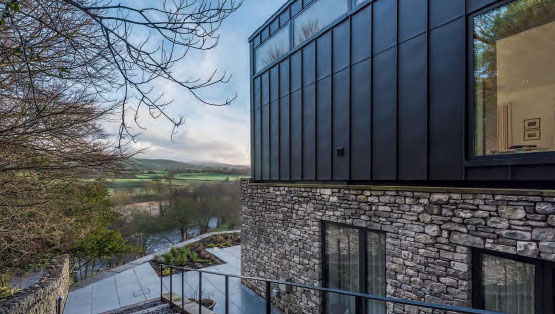Essential guide to low-maintenance cladding
If you’re searching for a hassle-free exterior finish that requires minimal upkeep, check out these options

The upper storeys of this house are clad in VMZinc’s vertical standing seam Anthra-Zinc in black. Available for approximately £150 per m2, this covering features a preweathered finish
As well as bringing a stylish aesthetic to your home, low-maintenance cladding could provide a fit-andforget solution that requires little ongoing upkeep. From characterful wood to modern metal finishes, there’s a host of options available. Specifying a product that’s durable and long-lasting is key. “Homeowners want a solution that’s hassle-free and low cost, with a good service life,” says John Russell from Russwood. Fitting a solution that doesn’t need much attention in use will also help you save money on potentially costly treatments. Here are some of the main materials to consider.
Natural timber
Wood cladding has long been a popular choice for building projects. Different species vary in terms of colour and graining, service life and the amount of upkeep they require. Ultimately, if you want minimal maintenance, you’re looking for a durable, rot-resistant material. Dimensional stability is also key, as some species are more prone to swelling and shrinkage than others. Many types of timber don’t need to be treated prior to installation, but bear in mind that they will inevitably weather to a silvery hue after several years.
“Wood is a natural product, so it will react with its environment,” says Emma Harmer from Silva Timber. “UV degradation and moisture absorption will affect its appearance, and it could develop a patchy weathered look with uneven changes.” The amount of sunshine an elevation gets, in addition to architectural features such as overhangs, can contribute to this variation. Some treatments, such as Sioo, will create an evenly weathered appearance at an accelerated rate. This means that regardless of the property’s level of exposure, the cladding will age at the same rate, resulting in a consistent tone. Any finish you do apply will wear over time, so boards will require re-coating – exactly how often depends on the qualities of the wood, how exposed the building is and the design of the dwelling.